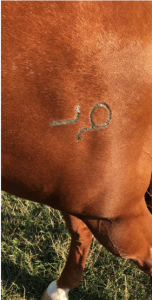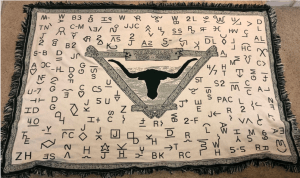General Information about Item:
- Customary lore
- Language: English
- State of Origin: Kansas, USA
- Informant: B.F.
- Date Collected: Nov. 6, 2021
Informant Data:
B.F., now 24, was born and raised in Kansas until attending university at Stanford, where he now pursues his PhD. Religion, specifically Christianity, used to play a large part in Billy’s family, but has since taken a more minor role. B.F.’s parents and grandparents also come from the Midwest, and a lot of his Christmas traditions are specific to his family and extend back for generations.
Contextual Data:
Cultural: As far as American Christmas traditions go, the practice of decorating a tree is among the most widely adopted. The tree is usually a pine, and gifts are placed under them prior to being opened. The tradition of decorating a tree, with lights and ornaments, has an unknown origin but is one that many families participate in.
Social: This lore was collected in a casual conversation, and I unfortunately forgot to record it. The topic of Christmas came up and I asked further questions about the informant’s tree-decorating routine. The informant first learned this when he was little, he doesn’t remember when. The act of decorating a tree for this purpose only happens around the 25th of December (it can be up to a few weeks prior, but the reason it is decorated is for Christmas gifts). The specific technique of applying lights to the tree seems to be specific to B.F.’s family.
Item:
The item is firstly the practice of decorating a tree under which gifts are placed. This is a general practice adopted by many American families during Christmas time. This informant’s family has a very specific decoration technique in which colourful lights are added to the tree. This technique’s origin is unknown, but it has been used in the family ever since string lights were commercially available. The lights themselves need to be small, but colourful. Starting at the base of the tree, the lights are first wrapped around the base of the branch counterclockwise then worked up the branch. The wrapping of lights goes around the entire branch and then up the tree.
Associated file (a video, audio, or image file):
Transcript:
“How we put the lights on the tree is a big deal. It needs to be done just right, otherwise the whole tree is out of balance. I’m not sure when this method started, probably ages ago. Maybe even when our family started getting string lights. Basically you start at the bottom of the tree, pick a branch and then wrap it like crazy. The first wrap on the branch is counter clockwise, but the direction changes depending on the branch, sometimes the branch splits and you have to wrap each split individually. Basically, the whole thing takes ages, and usually involves the whole family because you get tired really easily. We usually go for a nice big bushy tree, so it can take up to 3 hours. At the end, though, it is so beautiful and bright.”
Informant Comments:
“This is a picture of my very bad attempt, but I was away from home and my mom wasn’t there to walk me through it, I’m a little ashamed that this is the only photo I have”
Collector’s Comments:
The photo seems misleading because although he said he usually uses big bushy trees, the one in the photo is quite sparse, probably a consequence of having Christmas in a dry area such as California. Even still, you can see how the lights extend to the base of each branch. Given more time, I would see if I could get a photo from their home where the lights are done properly. This also could fall under the category of decoration, but I figured since the tree is an integral part of American Christmas gift-giving, I thought I would include it. The question then is does a technique count as folklore? I would argue yes. The origin is unknown, it’s been passed down in a folk group for generations and it is only used under a specific context. It is both material and customary.
Collector’s Name: Julia Cross
Dartmouth College
RUSS13
Fall 2021


